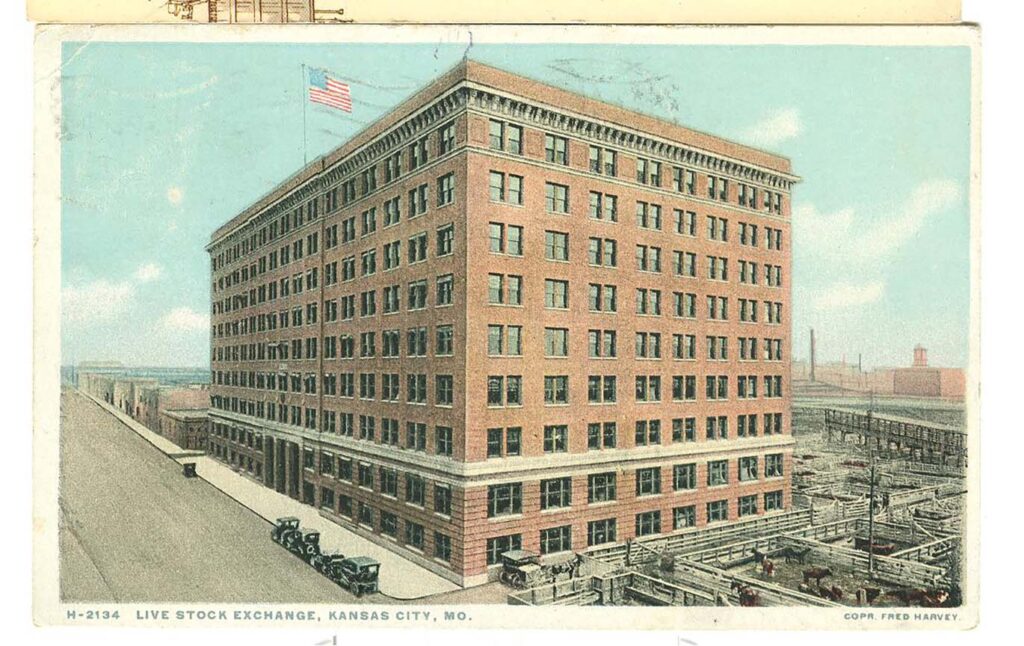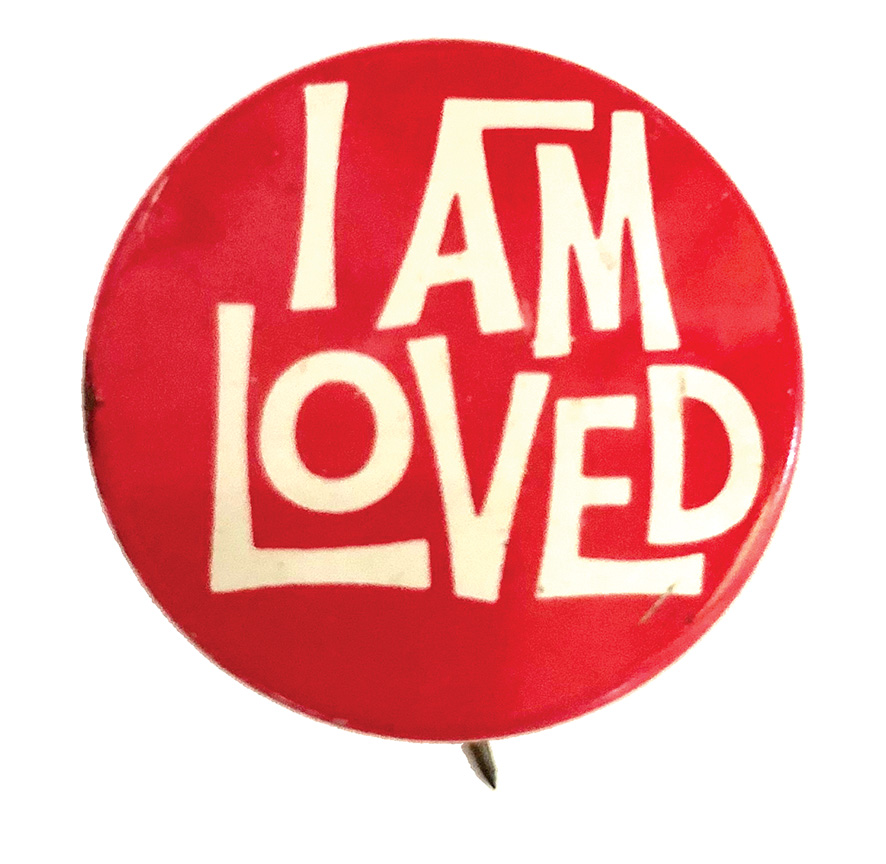
By Micheal Bushnell
About two years after the opening of the Hannibal Bridge over the Missouri River in 1869, the first building for the commission was 24 feet square, one and a half stories high and barely more than shelter from the elements. Its location was 12th and State Line, in what was then known as West Kansas. By 1872, the roof had been raised to make way for offices for the Livestock Commission. In 1873, the building was doubled in size to accommodate the growing stock trade in Kansas City.
Prior to that time, the Stockyards were essentially large stock pens on five acres of open land along the east bank of the Kansas River. The stock was watered at the river for convenience, being within a stone’s throw of the newly constructed stock pens.
In 1867, a market was established here in Kansas City to serve the growing number of livestock entering the city each day from the great western grasslands in Kansas, Oklahoma and Nebraska.
In 1876, a new Livestock Exchange building was constructed at roughly 16th Street and the state line for the then-extravagant cost of $35,000. It featured Romanesque architecture, a Mansard roof and had a footprint of 105 feet by 127 feet, standing a full three stories tall. Through the years, the building was added on to many times, sprouting “wings” and numerous additional floors.
Some postcards published around the turn of the 20th Century show livestock ramps entering the building at various levels. The great flood of 1903, as noted in last week’s Northeast News historic postcard column, spelled the end for the old building after water 15 to 30 feet deep swept through the building and the Stockyards, killing hundreds of thousands of cattle, sheep and other livestock.

Following the flood, plans were drawn for a new Livestock Exchange building, to be located at 1600 Genessee. They broke ground in 1909, after the great flood of 1908, and the new facility was opened for trading in December of 1911. The building is nine stories tall and was originally constructed with three wings off the back of the building, stretching west toward the site of the old Livestock Exchange building, which was razed when the new building opened. The cost of the “new” exchange building was $650,000.
The Livestock Exchange building still stands today and boasts a number of original features including the ceramic hex-tile floors, old-school office doors with rippled glass, and original hardwood floors in many of the office suites.
As for the stockyards, at the height of its operations, roughly between 1911 and just prior to the 1951 flood, millions of cows, hogs, sheep, horses, and a variety of other animals had sold at auction at the stockyards. By 1984 however, decentralization of operations to regional feed lots had reduced stock receipts in the stockyards to almost zero. In 1985 the stockyards were sold to a group of investors to try to save the operation that at its zenith was second only to Chicago in terms of stock sales receipts. In 1991, the stockyards held its last auction, the yards were officially closed and anything of value was sold at auction, then, what was left of the once proud Kansas City Stockyards were demolished. Not even one stock pen was saved. A modern office building and multi-story parking structure stand on the site today.
The message on the back of the new Livestock Exchange building postcard, sent to Mrs. A.B. Williams of 365 Sherman, Denver Colo., on Feb. 9, 1920, reads: “Dear Lottie & babies. Sunday, p.m., just passed Raton New Mexico. Am having fine weather. Haven’t seen snow. Papa seems to be getting along fine. Slept well last night. Hope all is well with you each and all. Love, Mother.”



















